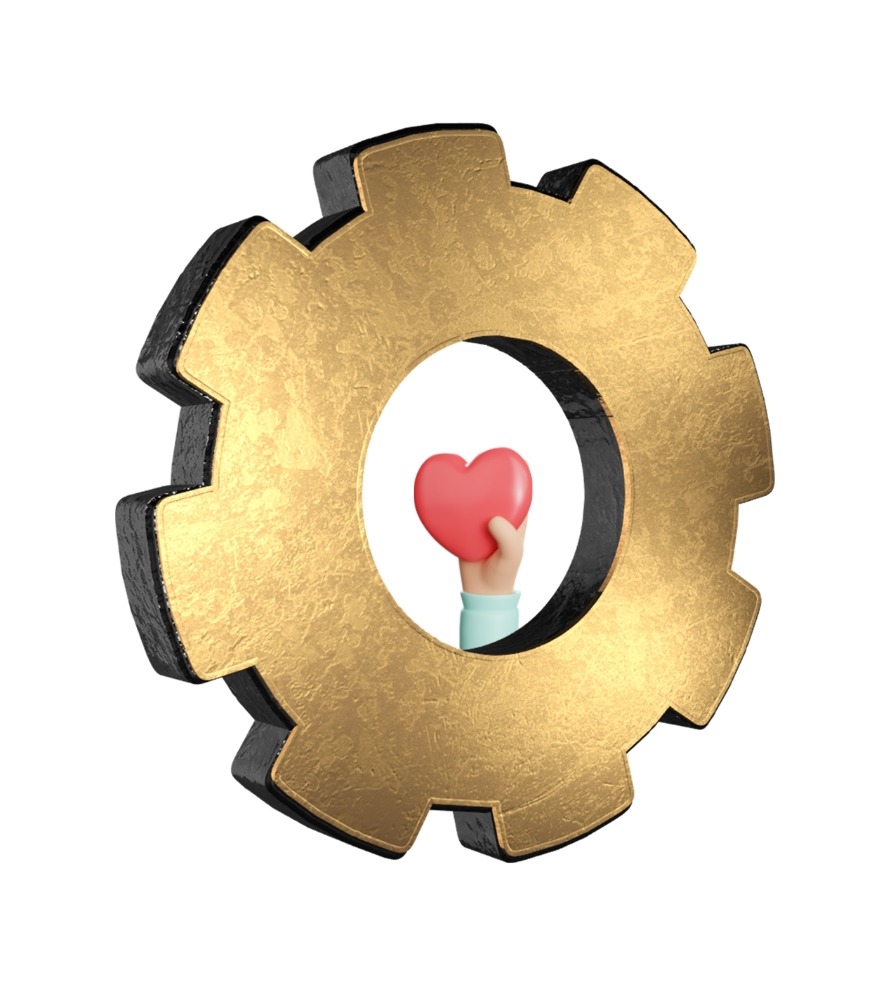The intervention below introduces you to a simplified version of how to deal with negative emotions. If you want more step-by-step insights into how emotions are made and how to intervene in the process, check out our Emotional Mastery experience:
To use this Personal Growth Intervention effectively, we will look at a (very) simplified process map of how emotions are made.
Once we understand the basics of this process, we will address where you can intervene to deal with your negative emotions.
Why do you have negative emotions?
You can find a process map of how emotions are made below. Hover over the tooltips for more information about each step. The process is also briefly outlined below the flowchart.

Exteroception: input coming from the outside, through the five physical senses (smell, taste, touch, sound, sight)
Interoception: input coming from inside the body (from organs, tissues, hormones, immune system…)
Simulation: the brain has to make meaning of all this data and discern between what to focus on and what to ignore.
The brain creates mental models, shortcuts based on what other people do, past experiences…
These mental constructs increase efficiency but are often not accurate, highly personal, and run below the threshold of conscious awareness.
Your subjective state is the sum total of all the evaluations that your brain and body are making or have made at any given moment.
An overall positive evaluation leads to a positive emotional state.
An overall negative evaluation leads to a negative emotional state.
What you describe as your ‘feelings’ is your personal description of your conscious awareness of the outcome of this process.
Brief description of this process:
-
1
Sensory input reaches the brain
This input comes from two sources:
1) From outside = exteroception: through the five physical senses (smell, taste, touch, sound, sight).
2) From inside = interoception: input from organs, tissues, hormones, immune system... -
2
The brain tries to make sense of it all
The brain must make meaning of all this input to discern between what to focus on and what to ignore. The brain makes e-valuations: simulations and predictions based on incoming electric signals.
-
3
Let's create shortcuts!
To run these processes, the brain creates mental models based on what other people do, past experiences... This saves energy and prevents your brain from crashing from the ever-moving flow of input it receives. These mental constructs are often not accurate, they are highly personal, and they run below the threshold of conscious awareness.
-
4
Your overall emotional state
Your overall emotional state is the result of all the evaluations that your brain and body have made. This state determines your perception of reality. There is no such thing as purely objective perception: The perception is always colored by the mental models of the perceiver.
-
5
+ / 0 / -
An overall positive evaluation leads to a positive emotional state.
An overall neutral evaluation leads to a neutral emotional state.
An overall negative evaluation leads to a negative emotional state. -
6
This is how I 'feel'
The label you put on your 'feelings' is your personal description of the outcome of this process. This is the part that you are 'consciously aware' of.
Now that we understand the basic process of how emotions are made a bit better, we can look at different interventions.
What follows is a holistic approach to dealing with negative emotions and encompasses both cliché interventions as well as practices you may be less familiar with.
Disclaimer: there are medical conditions that lead to significant emotional distress through different pathways. Although the interventions below will likely contribute to the alleviation of these illnesses, they might have to be combined with medical treatment.
How to deal with negative emotions?
The interventions can be roughly divided into 3 groups:
- Interventions that deal with the output of the process. These interventions decrease the power these emotions hold over you when they occur.
- Interventions that deal with the input of the process. These interventions send input to the brain and body to over-power or express negative emotions.
- Interventions that deal with the throughput of the process. These interventions change the system that produces negative emotions.
This can be visualized as such:

Remarks:
- Some of the interventions affect more than one phase (input, throughput, output).
- These interventions can be used to prevent negative emotions from occurring (or occur with less power) to begin with, but this Personal Growth Intervention starts from the assumption that you are already experiencing negative emotions and want to deal with them.
1. Interventions dealing with the output of the process

Characteristics:
- Will decrease the power negative emotions hold over you while you are experiencing them.
- Require little or no physical effort but a moderate to a high degree of self-awareness
- Work well both in the short and the long term.
- Aim to create space between who you are and the emotion you are experiencing.
Interventions:
- Use meditation or other mindfulness practices (such as letting go and surrendering). This will cause you to witness and objectify the emotion as something that you have v.s. as who you are. If you distance yourself from your emotion, the feeling will lose a lot of its power.
- Write down your thoughts and feelings in a journal.
- Talk to somebody about how you’re feeling. This may literally and figuratively help to get the negativity “off your chest.” See also this intervention.
2. Interventions dealing with the input of the process

Characteristics:
- Send input to the brain and body to over-power or express negative emotions.
- May require significant physical effort.
- Work especially well in the short term.
- Usually don't address the root cause of the negative emotions that you are experiencing.
Interventions to influence your internal triggers:
- move your body, exercise
- eat healthy, natural foods
- get enough sleep
- do breathing exercises
- practice yoga
- express appreciation to someone
- make a list of things you are grateful for
- visualize happy memories
- pray
- use affirmations
- take a step back and reframe your situation
Interventions to influence your external triggers:
- take a hot bath or shower
- get a massage
- avoid noisy or crowded spaces
- avoid people and situations that could trigger more negativity
- go into nature
- expose yourself to natural light
- read/watch an enjoyable book or movie
- listen to your favorite music
- connect with friends
- play with a pet
3. Interventions dealing with the throughput of the process

Characteristics:
- They change the system that produces negative emotions.
- Require no physical effort, but a high degree of self-awareness.
- Work especially well in the long term.
- Stimulate you to become more aware of your mental models, habits, and subconscious processes.
Many forms of psychotherapy such as Cognitive Behavioral Therapy are based on this principle.
Interventions:
- Write out (or better: draw out) on a piece of paper 1) what triggers activated -> 2) your existing mental models to -> 3) cause your brain and body to produce these negative feelings.
- Keep a journal about your emotional experiences and try to become better at describing your emotional states in more detail. This increases your emotional intelligence.
- From your journal entries, create a list of triggers that are important for you to feel emotionally healthy.
4. Intervention stacking
Combining multiple interventions is the most powerful way to deal with negative emotions. For example, if you feel anxious, you could:
- Use mindfulness to create space between yourself and the feeling, and let it go (output intervention).
- Go for a walk in nature while listening to your favorite music or affirmations (input interventions).
- Journal about the triggers that make you feel anxious and why your brain perceives them as a threat (throughput intervention).
If you practice these interventions deliberately, you will become much less reactive and more responsive to potentially stressful situations… and this is how you move forward in the long run.
Test your emotional intelligence
Take the next step with our Emotional Mastery experience
Conclusion
Everyone experiences negative emotions in their life. These energetic states arise when your mental models of how the world should be don’t match your experience of reality or when your body is out of balance.
To deal with negative emotions, it’s essential to understand the basics of the process of how they are made.
Next, you can intervene in the different phases of this process. You can learn to manage the triggers that cause negative emotions or practice letting go of a negative state to make yourself feel better.
However, these actions often don’t solve the root cause of the problem. More introspection and an increase in awareness are essential to keep moving forward.
Different interventions will resonate with different people. Create a list of what works for you to feel emotionally healthy. Try to stack interventions for more powerful results.
Sometimes additional treatments, such as antidepressants or other medications, may be necessary. Don’t hesitate to ask for professional help if you need it.






